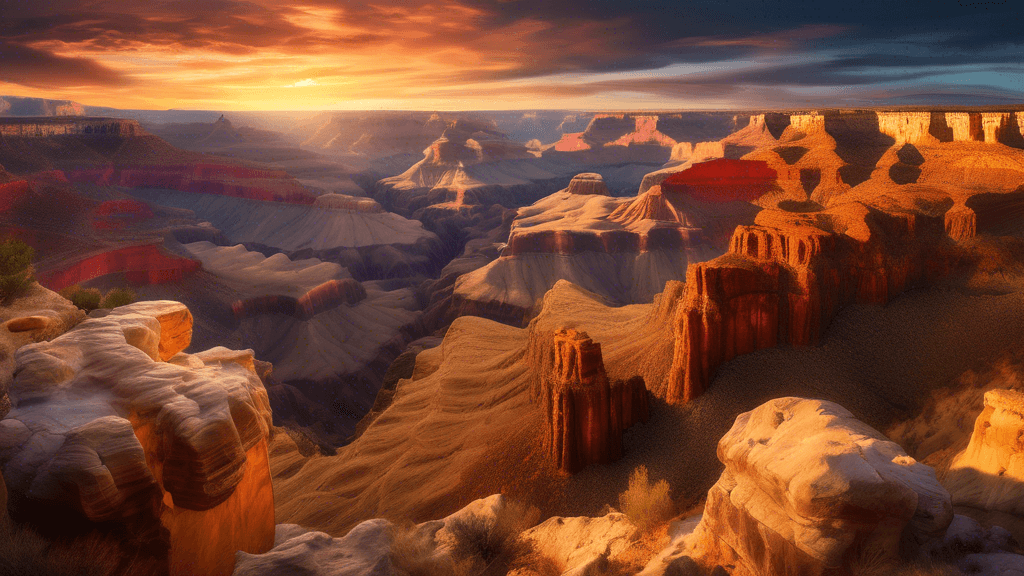
Nature's Masterpieces: Exploring the Artistry of Geological Formatures
Share
Unveiling the Splendor of Geological Formations
Have you ever stood before a towering mountain or a sprawling canyon and wondered about the forces that sculpted such majestic beauty? Geological formations are not just random acts of nature—they are nature's own exquisite works of art, meticulously crafted over millions of years. But what do these structures tell us, and why are they crucial for both our environment and our understanding of Earth's history? Let's dive deep into the intricate world of these natural wonders, discovering the artistry hidden in rocks and landscapes.
The Science Behind the Scenery
Geological formations are primarily shaped by the dynamic processes of Earth's crust. These processes include volcanic activity, erosion, sedimentation, and tectonic shifts. Each formation holds a story, detailing the environmental conditions and natural forces at play throughout Earth’s geological timeline.
Volcanic Masterpieces
Consider the dramatic contours of a volcano. Volcanoes aren't merely destructive; they are creative too, forming islands and mountain ranges that are incredibly diverse in their ecosystem. The Hawaiian Islands, for instance, owe their existence to volcanic activity, with each eruption contributing to the unique biodiversity and landscapes we observe today.
The Art of Erosion
Canyons and gorges, on the other hand, showcase the art of erosion. Water, wind, and the movement of ice grind away at rock and soil, carving intricate patterns and revealing the history encoded in Earth’s layers. The Grand Canyon in the USA, with its steep-sided canyon carved by the Colorado River, is a testament to the persistent force of water, wind, and geological uplift.
The Role of Tectonic Movements
Mountain ranges like the Himalayas exemplify the majestic results of tectonic forces. The ongoing collision between the Indian and the Eurasian tectonic plates not only gives rise to the soaring peaks of the Himalayas but also triggers earthquakes that continually reshape the landscape, adding to its unique geological character.
Why Should We Care About Geological Formations?
Aside from their breathtaking beauty and the raw excitement of exploring them, geological formations have profound environmental and scientific significance:
- Ecosystem Diversity: Each geological formation supports its unique ecosystem, making them vital for biodiversity.
- Climate Insights: Studying formations helps scientists understand past climate conditions, leading to better predictions and preparation for future changes.
- Natural Resources: Many formations are reservoirs of natural resources like minerals, oil, and fresh water, crucial for human consumption and economic development.
Dr. Jane Goodall, an expert in environmental conservation, eloquently stated, Every geological formation is a chapter in Earth's history book. By protecting these natural archives, we ensure future generations can continue to learn from and enjoy our planet’s storied past.
The Importance of Preserving Our Geological Heritage
Despite their resilience and age, geological formations are under threat from human activities such as mining, pollution, and irresponsible tourism. Protecting these formations is not only about preserving scenic landscapes but also about maintaining the geological diversity that is critical for scientific research and ecological balance.
How Can You Contribute?
Engaging with nature through responsible tourism, supporting conservation projects, and educating others about the importance of geological formations are powerful ways to contribute. By appreciating these natural masterpieces, we take a step towards their preservation.
So, when was the last time you visited a geological formation? Reflect on your experience or plan your next adventure. Remember, each visit should be marked by respect and a commitment to leaving no trace, ensuring these natural works of art remain pristine for generations to come.
In conclusion, geological formations are more than just stunning landscapes; they are vibrant, ever-evolving canvases that tell the tale of our planet's ancient past. By understanding and protecting these magnificent structures, we not only enrich our knowledge but also ensure that future generations can enjoy and learn from these extraordinary pieces of natural artistry. Is there a better way to connect with our planet than by exploring and preserving its most profound features?
If you are inspired by the marvels of nature's own gallery, consider getting involved in local and global efforts to preserve our geological heritage. Every action counts in the collective effort to conserve and respect our Earth’s irreplaceable artistry.





